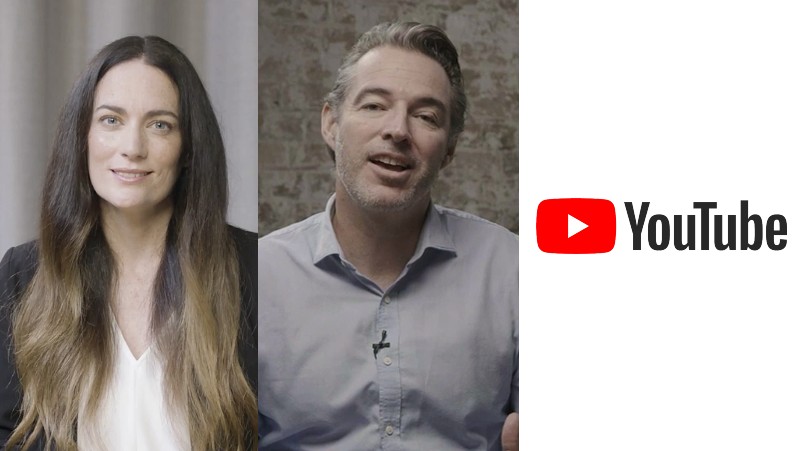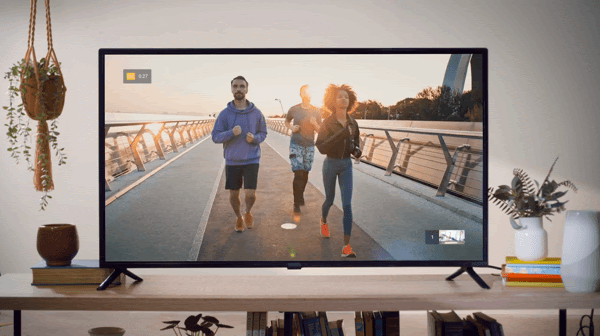YouTube, Analytic Partners strike: 89% higher ROI than TV, BVOD; Canva, Chemist Warehouse, Samsung make it ‘core channel’ but creative ‘last unfair advantage’

New analysis from of how CPG brands use YouTube “paints a pretty impressive picture when it comes to YouTube’s impact”, Caroline Oates, Head of YouTube Advertising for Australia and New Zealand, says.
Now it’s getting messy. YouTube used its annual Brandcast industry event last week to counter a major study earlier this year by the TV broadcaster-backed Premium Content Alliance to show YouTube trounced TV and BVOD for impact and business results. Creative, however, remained the elusive magic that could propel results by up to 100 per cent.
What you need to know:
- YouTube says it delivers more sales for less money than other video platforms and has the research to show it.
- In YouTube’s Brandcast, the platform announced a new Connected TV ad format, which allows users to send a link to the advertised product directly to their phone, and shared the findings of media mix modelling analysis by Analytic Partners.
- YouTube had 89 per cent higher ROI than TV, 85 per cent higher ROI than BVOD, and 64 per cent greater incremental sales per impression than TV, Google said.
She said, he said
The army of YouTube and social video proponents scoffed earlier this year when TV broadcasters unveiled the findings from a major benchmarking study by Dr Duane Varan’s Media Science showing BVOD and TV outmuscled YouTube, Facebook and run-of-internet for advertising impact. Now the YouTubers have hit back.
Google’s video platform engaged econometrics firm Analytic Partners – and Nielsen – and found it was in fact YouTube that is king of video advertising impact and ROI.
In a LinkedIn post on Think Premium’s findings, Hello Social’s Australian boss Sam Kelly “called BS” on the broadcaster study, inferring funding bias, although he has since deleted the post. It’s unclear whether Kelly holds the same position on the YouTube-funded study but it illustrates the ongoing dilemmas in research methodologies, findings and funding.
Still, YouTube, like the broadcasters, had plenty to say on its commissioned study.
“More brands are seeing strong ROI by investing in YouTube as their core channel in their media mix,” Google’s Managing Director of Large Customer Sales, Rhys Williams told the virtual Brandcast audience last week.
He cited Tourism New Zealand and Mindshare which have been “using YouTube for years” to attract audiences to the country. “They maximise the full funnel capabilities of YouTube to not only reach millions of potential travellers but encourage people to take action and book holidays in the moment.”
Samsung and CHE Proximity, Carat and BWS and Mondelez, Canva and Chemist Warehouse were doing likewise, Williams said.
Google said YouTube:
- Has a greater incremental sales per impression than TV in 64 per cent of cases.
- Delivers 65 per cent higher return on investment than BVOD.
- Has a greater ROI than BVOD in 85 per cent of CPGs measured.
- Has a greater ROI than TV in 89 per cent of CPGs measured.
The analysis “paints a pretty impressive picture when it comes to YouTube’s impact”, Caroline Oates, Head of YouTube Advertising for Australia and New Zealand, said. The platform claims to reach 8 million Australians on connected TV screens, and more than 16 million Australians each month – 84 per cent of the adult population.
Oates detailed four case studies of brands seeing success using YouTube, including Tourism New Zealand''s 'Stop dreaming about New Zealand and Go'. per the company, the campaign reached two million potential travellers in just one week, delivered a 13.5 per cent increase in brand lift, and contributed over 35 per cent of unique reach coming from the TV screen from May to July this year.
“Media agency Carat's recent campaign for BWS is a great example,” Oates said.
“Along with some awesome creative from M&C Saatchi, they turned to YouTube and shortly after they were breaking out the champers to celebrate. CEO of Dentsu Media ANZ, Sue Squillace, said YouTube drove significantly higher ROI than any other channel, 32 per cent higher than Social, 54 per cent higher than BVOD and 150 per cent higher than TV.”
Samsung and Mondelez campaigns were also cited by YouTube to demonstrate the impact of YouTube compared to TV and BVOD.
ROI or recall?
The findings stand in stark contrast to the findings of a major study from Think Premium Digital released in August, which, after a year of research, made the case that marketers should not view all online platforms as equal.
Major publishers, including Nine, Seven, 10 ViacomCBS, News Corp and Foxtel Media, argue their “premium” content environments deliver higher advertising impact, and Think Premium Digital’s report, which drew from 5,000 respondents, found a big difference.
- Unprompted recall was 49 per cent higher for BVOD (52 per cent) versus 35 per cent for YouTube short form content (less than nine minutes).
- Unprompted recall for ads in long form content (greater than nine minutes) for BVOD was 11 per cent higher than YouTube (52 per cent versus 47 per cent).
“There’s a popular assumption in the market that news is a bad environment for ads,” said the report's author, Dr Duane Varan.
“That's actually a flawed assumption. The assumption is because the content might be negative that an ad being placed in that environment might suffer. But actually, we've done many, many studies where we've consistently demonstrated that ads actually do much better in news."
Creative the real elixir
Beyond the battle with BVOD and broadcasters for platform impact, YouTube, like Facebook, is continuing its messaging to brands and agencies that creative is the real elixir for better business results.
Nine and Seven too are pushing the creative agenda with both networks creating Super Bowl-like creative competitions for brands and agencies to drive better creative ideas and treatments.
“Creativity is the last unfair advantage in advertising,” Williams said. “We're seeing more brands embrace an experimentation mindset and leverage the combined power of data plus creativity to drive attention and connection with their audience and ultimately improve their ROI.”
YouTube’s global creative director Ben Jones told the Australian Brandcast audience it was an “incredibly exciting time to be studying creative right now as we are learning more every six months than we’ve learned in my first 20 years in this business. Creative is not only the dominant driver of business results but it’s the dominant driver by an order of magnitude.”
But it does require more bespoke creative applications for individual channels and platforms, something many brands still struggle to achieve with efficiency.
“YouTube is the perfect place for brands to drive business results, especially when you focus on creative made specifically for YouTube,” said Caroline Oates.
New TV ad products
YouTube also announced a ‘Connected TV, Brand Extensions’ ad format, which are interactive ads that allow a viewer watching YouTube on a TV to send a link to the product directly their mobile device.
Google Australia’s Managing Director of Sales, Rhys Williams, said YouTube’s connected TV viewers engaged with videos that were 30 per cent longer than those on mobile and desktop, and average watch time was 1.5x longer.

